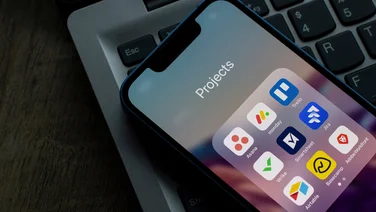To help us provide you with free impartial advice, we may earn a commission if you buy through links on our site. Learn more


Not too long ago, Mozilla’s Firefox was the savvy web user’s browser of choice: lightweight, open and extensible. However, its position has recently become less secure, thanks to the fast development of rivals like Google’s lightweight Chrome browser and Microsoft’s increasingly feature-packed Internet Explorer.
With the latest Firefox 4 beta, Mozilla has been fighting back with new features and responding to complaints about the speed and stability of the aging version 3.6. We spoke to Tristan Nitot, President of Mozilla Europe and Jay Sullivan, Vice-President of Products, about the latest developments and tried a few of them out for ourselves.
As you’d expect, the latest version has all the bells and whisles you’ll need from a next generation browser, mostly in the form of support for HTML5, with its integrated handling of video, drag-and-drop and other features that developers expect to define the next generation of web sites.
The browser’s interface and performance have been streamlined. Less space is being taken up by bars and tabs have been moved to the top bar, while settings, history and add-on information are all hidden in a small but conveniently located Firefox menu to the left. More importantly, the browser feels a lot quicker, even when loaded with dozens of tabs. It’s a noticeable improvement on previous betas, as well as on Firefox 3.6. You can also easily pin your most frequently used tabs, so that they’re loaded automatically, and sort others into related groups, making it easier to manage your browsing the next time you unexpectedly lose six hours to ‘research’ on Wikipedia or TV Tropes.
Firefox 4 beta 12 also showcases some of the more exciting and innovative features we’ll all be expecting from our web browsers in the very near future.
Sync between versions
Firefox 4 is being simultaneously developed for both mobile and desktop platforms, but you won’t just be able to run the same browser on your phone and PC – they’ll also be able to share bookmarks, history, passwords tabs and other data. The mobile version of Firefox 4 beta is already available for Android users, but it’s power-hungry. Our HTC Legend isn’t up to the task of running it – you’ll need one of the latest Android phones or tablets to use it. Jay Sullivan admitted that it’s designed primarily for phones with dual-core processors, like LG’s Optimuz Z, so most of us will be using Firefox on next year’s mobile than on our current phones.
3D web graphics
Firefox now has integrated support for 3D graphics in the form of WebGL, which allows web programmers to use a combiation of JavaScript and HTML5 to render 3D graphics in your browser. Firefox 4 can also use your graphics card to to make your web-based 3D experience run more smoothly with hardware acceleration. Hardware acceleration is also applied to web video content.

[
WebGL isn’t unique to Firefox – it’s already been implemented in the current versions of Chrome and Safari – but the potential for web-based games and entertainment is massive. On the down-side, like Flash, it’s also likely to prove an irresistible temptation to companies and designers who want to create needlessly overblown websites that will primarily serve to irritate users with less powerful computers and slower web connections. Nonetheless, the results are impressive. If you have a WebGL capable browser, we’re rather fond of this spinning planet demo and these rippling linear waves. You can’t go wrong with fractals, either.
Securing the web
Privacy is an ongoing concern for web users, particularly as targetted advertising has become the defining model when it comes to making money from websites. Meanwhile, other users are concerend about the potential for identity theft or worry about their significant other seeing something incriminating in their browser history. An easy-to-activate private browsing mode deals with the latter. Other security measures include defenses against cross-site scripting attacks and HTTP Strict Transport Security, which automatically loads the secure version of a web site where available.
Mozilla has also premiered a “Do Not Track” opt-out system for sites that use cookies to track your online activity and advertise to you accordingly. It’s a rather unusual concept, as Firefox itself doesn’t actually do anything except inform the sites you visit that you don’t want to be tracked. Instead, it relies on websites to have the good grace to sign up to the scheme and honour your expressed wishes. It’s rather like the Telephone Preference Service telemarketing opt-out, except for websites and tracker cookies. Unfortunately, it’s based on the hope that website proprietors will be kind enough to abide by it, rather than being legally enforced like TPS.
Future fox?
Firefox 4 beta 12 looks and feels a lot more complete than the earlier betas we’ve tried. The browser is fast, smooth and bang up to date, although support from third-party extensions is still limited. The beta already very usable and we’re looking forward to the final release version. It’s certainly taken long enough. In future, Mozilla plans to roll out new features as they’re developed. Jay Sullivan told us that “Firefox 4 will be the last big release” and that the future is in smaller releases and faster development. That alone might be enough to keep Firefox abreast of the competition. Whether it’s enough to bring us back from Chrome remains to be seen.





